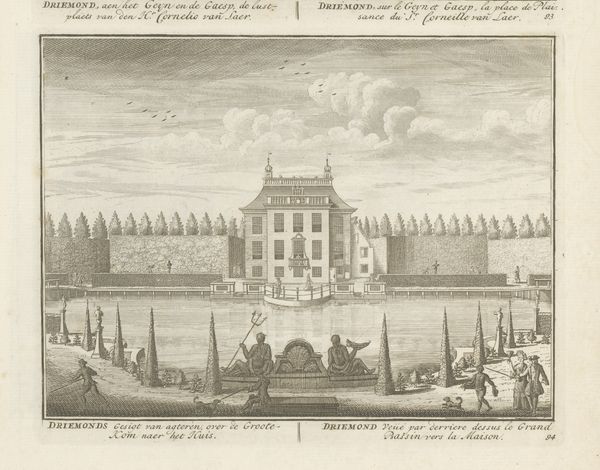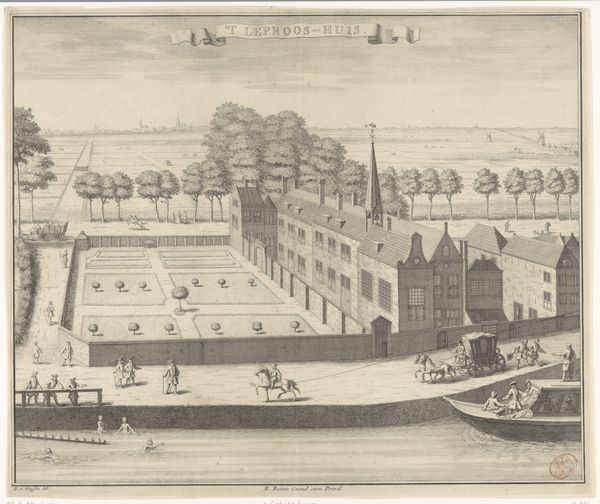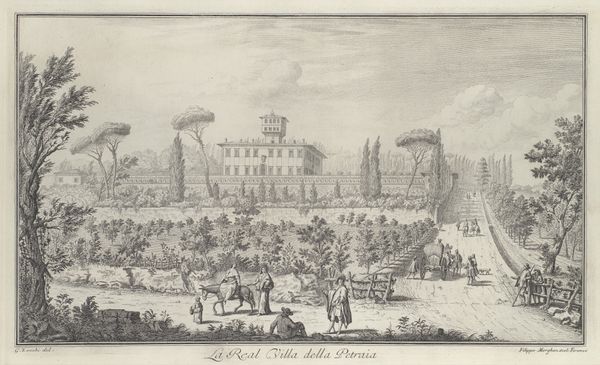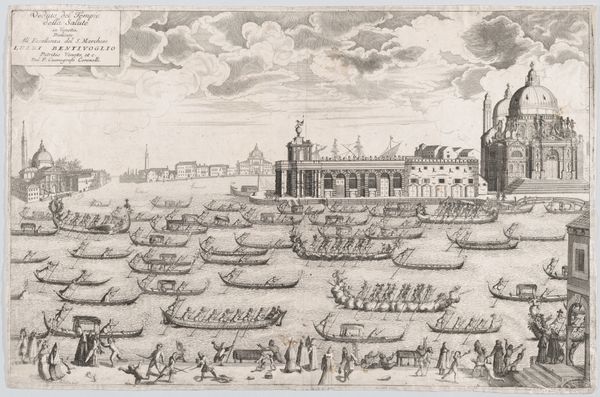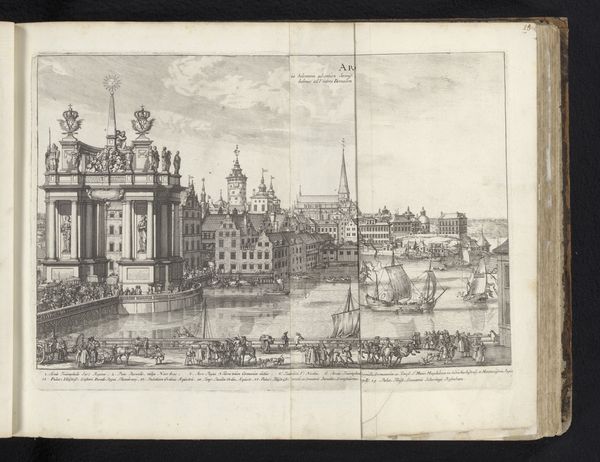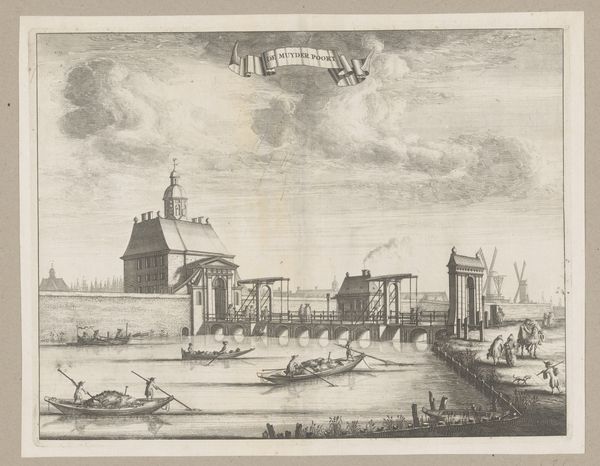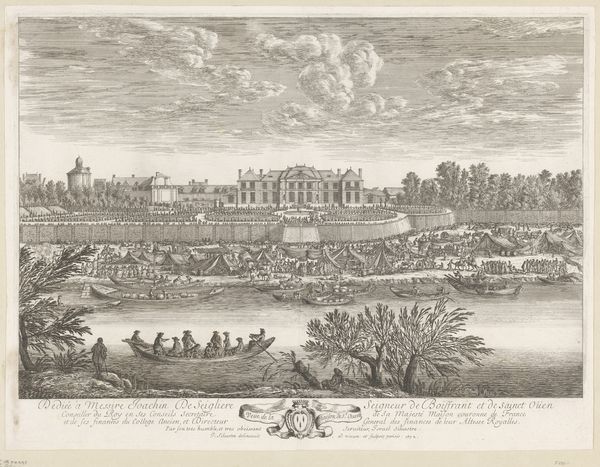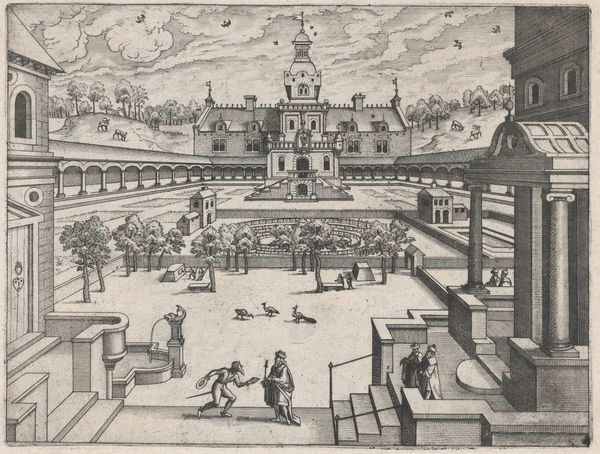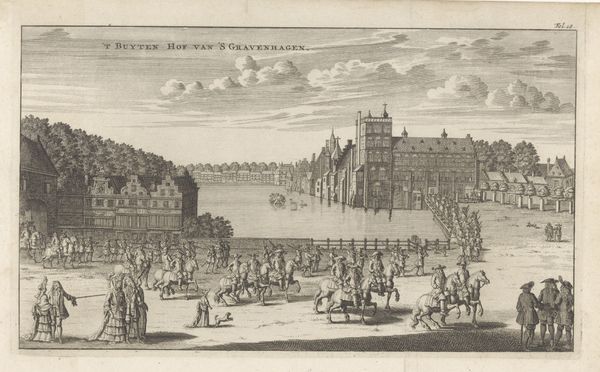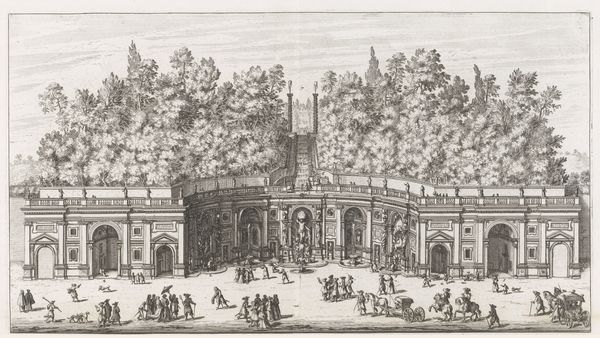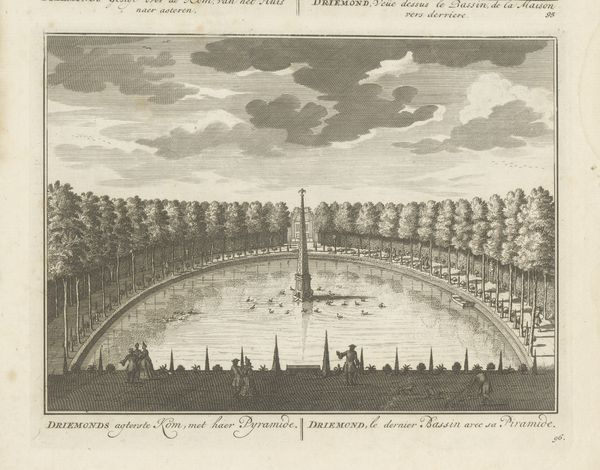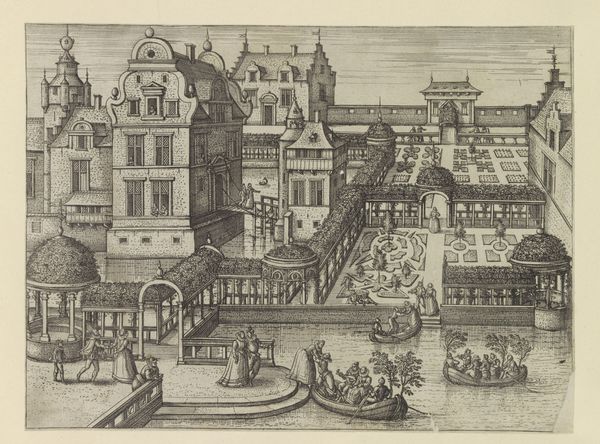
drawing, print, engraving
#
drawing
#
weapon
#
baroque
# print
#
pen sketch
#
soldier
#
horse
#
cityscape
#
history-painting
#
engraving
Dimensions: Plate: 9 3/4 × 16 1/4 in. (24.8 × 41.2 cm) cut on the platemark
Copyright: Public Domain
Editor: This engraving, "Visit to A. Roelants" by Wenceslaus Hollar, dates back to 1650 and is currently held at the Metropolitan Museum of Art. What strikes me first is how the composition is sharply split between the hustle-and-bustle on the left versus the still architecture of the estate on the right, emphasizing that strong, horizontal line created by the canal that divides the composition into foreground and background. How would you interpret this contrast? Curator: Indeed. The linear precision of the engraving technique lends itself beautifully to the depiction of architectural structure and the detailed pageantry. Note the carefully rendered perspective lines guiding the eye from the figures toward the heart of the structure and flags that pierce the skyline. Observe how Hollar uses hatching to describe tonal variation in water, and the rough skies. Where do you think the focal point exists? Editor: I see, it's clever. My eye is definitely drawn to the structure, with its concentration of linear detail compared to the hazier, more sketched human figures in the fore. So, the tension almost vanishes thanks to your deconstruction, and, instead, gives precedence to the building. How very formalist! Given the constraints of engraving, do you think Hollar's treatment of shadow and texture achieves sufficient contrast to emphasize three-dimensionality? Curator: An excellent observation. One could argue that while absolute realism isn’t the primary goal, the piece engages with a dynamic interplay of light and shadow – achieved through meticulously placed lines. The cross-hatching technique certainly conveys spatial depth to some extent, guiding the eye across the landscape and highlighting various details of this very political rendering of status, even in such delicate marks. Editor: Right! That tension creates that nice contrast! I never would have noticed without that approach. Curator: Yes, by examining elements like composition and line work, the historical context reveals itself. An artistic reading reveals social standings and commentary even through line and hatching.
Comments
No comments
Be the first to comment and join the conversation on the ultimate creative platform.
